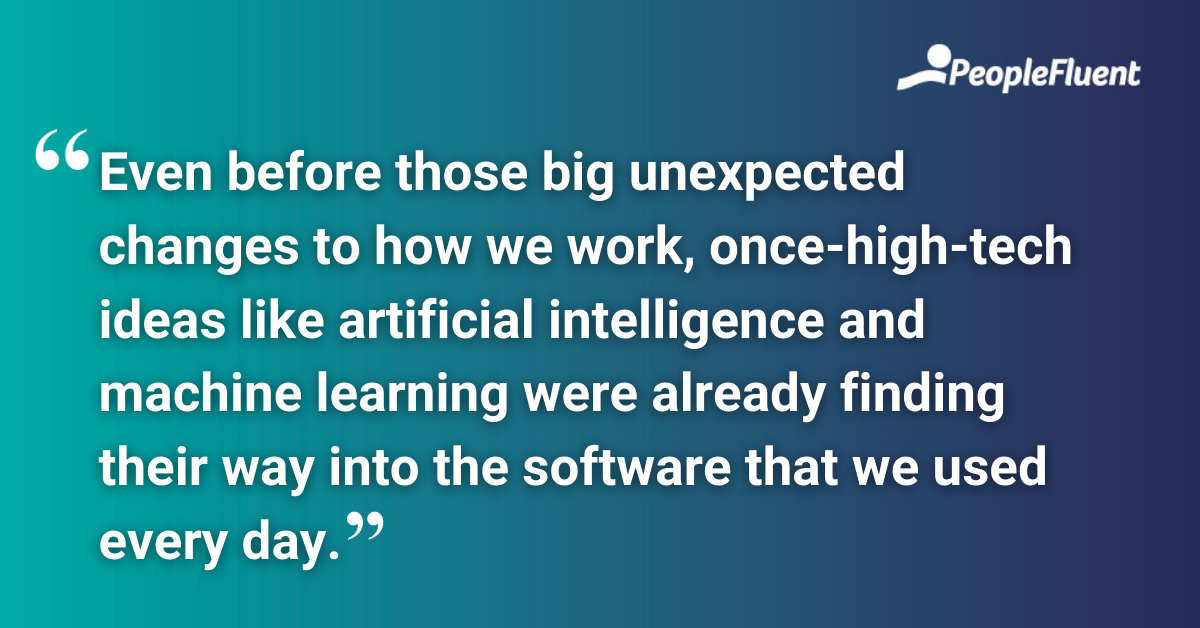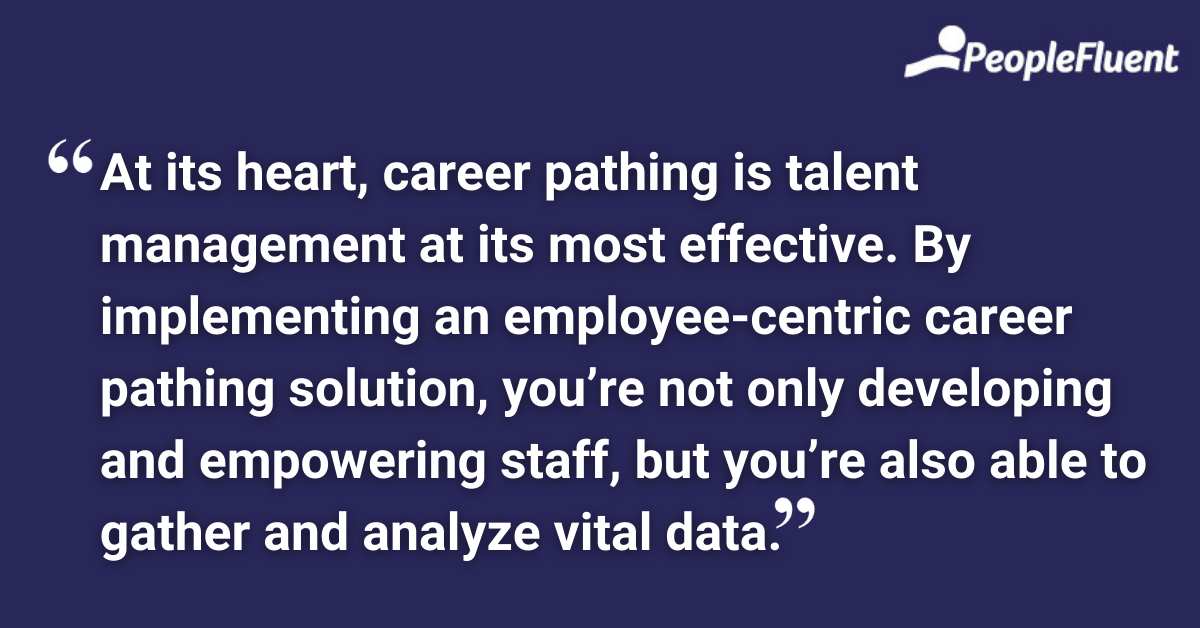Published: Jan 17, 2022Time to read: 5mins Category: Insights
Taming the AI Beast: How AI Can Optimize Employee-Directed Career Pathing
Table of Contents
Like most HR and people teams, you’re probably feeling the effects of The Great Resignation. One way to stem the tide is looking internally to your existing talent. Start by embracing AI recommendations in career pathing technology to help you retain and engage your current employees. Read on to find out how!
Did you know that 40% of employees cite lack of career growth as their reason for leaving an organization? And that Millennials and Gen Z, who now make up 59% of the workforce, prize employability, lifelong learning, and the opportunity to learn new skills over long-term employment?
We could put it another way by talking about the bottom line. The financial impact of employee turnover is staggering. On average, for a mid-sized company with around 10,000 staff, a 6% voluntary turnover could cost in the region of $45 million a year.
What if we told you there was an effective way for you to help maintain, retain, and engage your employees, using artificial intelligence or machine learning?

What Are AI and Machine Learning?
Between all the Zoom meetings, digital webinars, and the sheer amount of daily communication now delegated to messenger programs thanks to the global pandemic, it’s fair to say that we’re all feeling a little more tech-savvy these days.
Even before those big unexpected changes to how we work, once-high-tech ideas like artificial intelligence and machine learning were already finding their way into the software that we used every day. The average person now understands that when they shop on Amazon or eBay, watch Netflix or listen to podcasts, AI and machine learning are in play.
These technologies underpin every recommendation, notification, or price comparison that keeps us spending time and money. So there’s a very good chance you’ve come face to face with the “beast” that is AI in your leisure time. Increasingly, you’ll have encountered it in your professional life too, as similar recommendation capabilities turn up in everything from talent mobility tools to learning experience platforms (LXPs).
To truly tame this beast, you’ll have to get it to work for you. In a people management context, it’s particularly worth paying attention to the possibilities of employee-directed career pathing technology.

YOU MIGHT ALSO LIKE | ‘Talent Mobility Tools Comparison 2021: Evaluating 5 Major Platforms’
How AI Optimizes Employee-Directed Career Pathing Technology
When we talk about AI or machine learning in terms of your organization, we’re simply referring to software that can help you, as a talent manager or L&D specialist, retain and engage with your staff.
But how do you make it work for you? And what are the benefits?
At its heart, career pathing is talent management at its most effective. By implementing an employee-centric career pathing solution, you’re not only developing and empowering staff, but you’re also able to gather and analyze vital data in terms of:
- Employee insight, including career goals, interests, and upskilling progress
- Internal mobility
- L&D program optimization
Let’s focus on each of these in a bit more detail.
Employee Insight
Using AI is not only one of the best ways to help develop employees, but it also lets you gather vital data around career goals, what their interests are and how and where they’re upskilling.
With the help of a specially designed platform, employees can get targeted development opportunities for specific roles. At a glance, they can explore:
- Career paths
- Jobs
- Projects
- Mentorships
- Learning programs
On the flip side, it also helps you with succession planning. You’ll be able to easily see what roles employees are least interested in. Plus, you can better develop talent succession slates by understanding employees who are actually interested in the role.

MORE FROM THE BLOG | ‘The Widening Workplace Skills Gap and How to Address It’
Internal Mobility
Integrating AI with career pathing technology can help your company fast track internal mobility. Rather than spending valuable time headhunting for candidates outside the organization, recruiters can look at opportunities and identify potential employees, all in one place.
The system can also be created to help HR, talent managers, and L&D specialists to analyze and highlight staff capability strengths as well as identify any skill gaps. This way, you're able to implement an effective succession planning strategy.
HANDPICKED FOR YOU | ‘Internal Mobility vs Talent Mobility: What’s the Difference and Why It Matters’
L&D Program Optimization
To thrive as a business, it's become more important than ever to understand the skills available to you through talent mobility, while also knowing where the skill gaps are. AI technology can help to assess potential risks in the organization and nurture the talent you already have.
It’s also an excellent way for your company to drive talent investment, identify emerging careers or roles and implement a learning ecosystem to meet the business’s goals.
Last, but by no means least, career pathing technology allows L&D specialists to guide the organization by identifying and investing in upskilling or reskilling programs.
FURTHER THOUGHTS ON TALENT MOBILITY | ‘Team Me Up, Scotty! 4 Ways Talent Mobility Can Create an Out-of-This-World Employee Experience’
Are You Engaging With Your Employees?
A recent study showed that 73% of employees think talent mobility technology increases engagement. According to industry analyst Josh Bersin, companies that implement this kind of technology see the results quickly.
The reverse holds true as well. It’s estimated that 81% of employees want opportunities to grow and develop. Without a clear career path in place, your staff will look elsewhere.
Are you thinking about implementing career path technology in your organization?
The greater your visibility, the better your internal mobility program will be. Not sure where to start? Why not get in touch: we’ve got the perfect solution to future-proof your company.